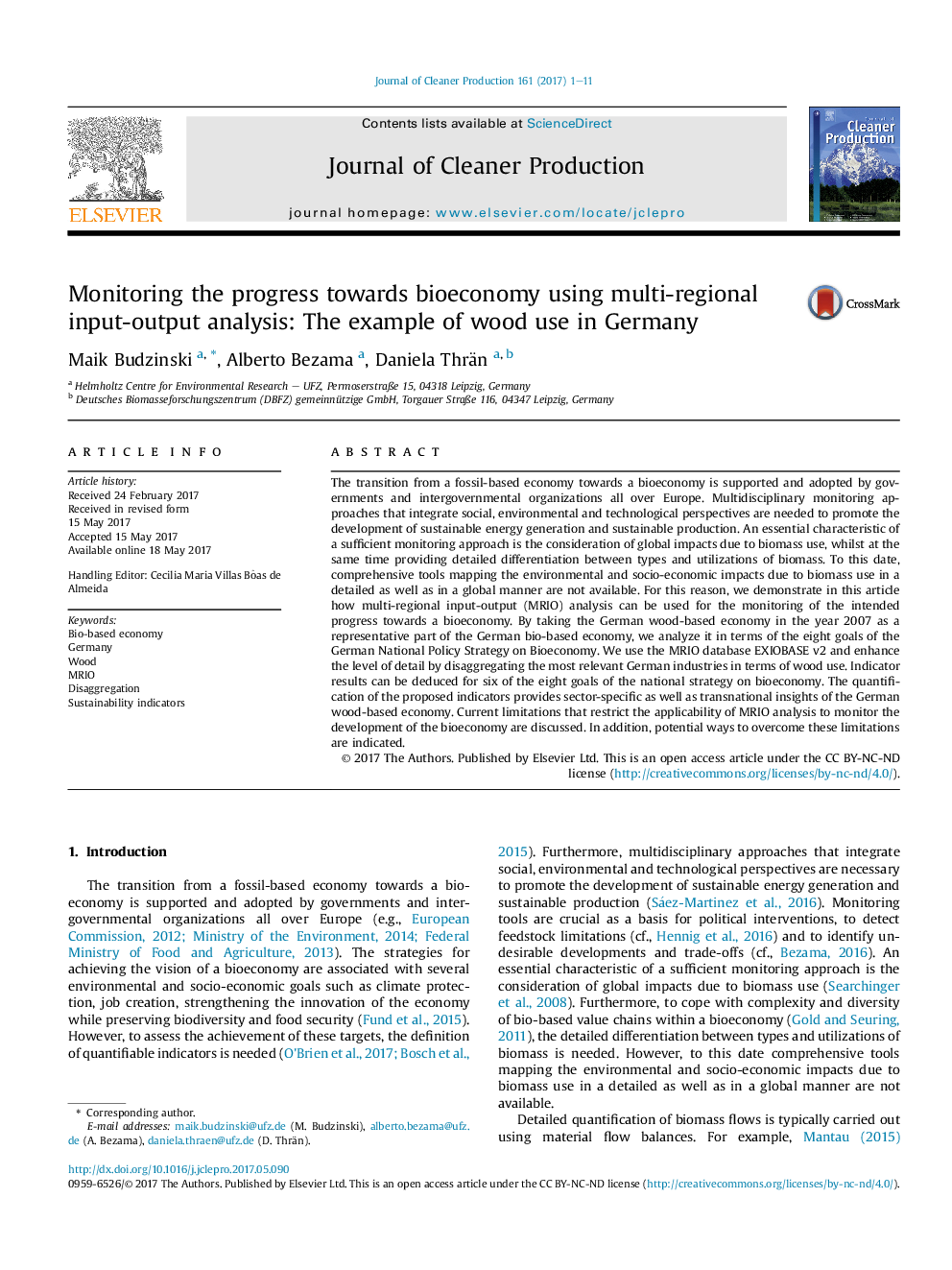| Article ID | Journal | Published Year | Pages | File Type |
|---|---|---|---|---|
| 5480812 | Journal of Cleaner Production | 2017 | 11 Pages |
Abstract
The transition from a fossil-based economy towards a bioeconomy is supported and adopted by governments and intergovernmental organizations all over Europe. Multidisciplinary monitoring approaches that integrate social, environmental and technological perspectives are needed to promote the development of sustainable energy generation and sustainable production. An essential characteristic of a sufficient monitoring approach is the consideration of global impacts due to biomass use, whilst at the same time providing detailed differentiation between types and utilizations of biomass. To this date, comprehensive tools mapping the environmental and socio-economic impacts due to biomass use in a detailed as well as in a global manner are not available. For this reason, we demonstrate in this article how multi-regional input-output (MRIO) analysis can be used for the monitoring of the intended progress towards a bioeconomy. By taking the German wood-based economy in the year 2007 as a representative part of the German bio-based economy, we analyze it in terms of the eight goals of the German National Policy Strategy on Bioeconomy. We use the MRIO database EXIOBASE v2 and enhance the level of detail by disaggregating the most relevant German industries in terms of wood use. Indicator results can be deduced for six of the eight goals of the national strategy on bioeconomy. The quantification of the proposed indicators provides sector-specific as well as transnational insights of the German wood-based economy. Current limitations that restrict the applicability of MRIO analysis to monitor the development of the bioeconomy are discussed. In addition, potential ways to overcome these limitations are indicated.
Related Topics
Physical Sciences and Engineering
Energy
Renewable Energy, Sustainability and the Environment
Authors
Maik Budzinski, Alberto Bezama, Daniela Thrän,
